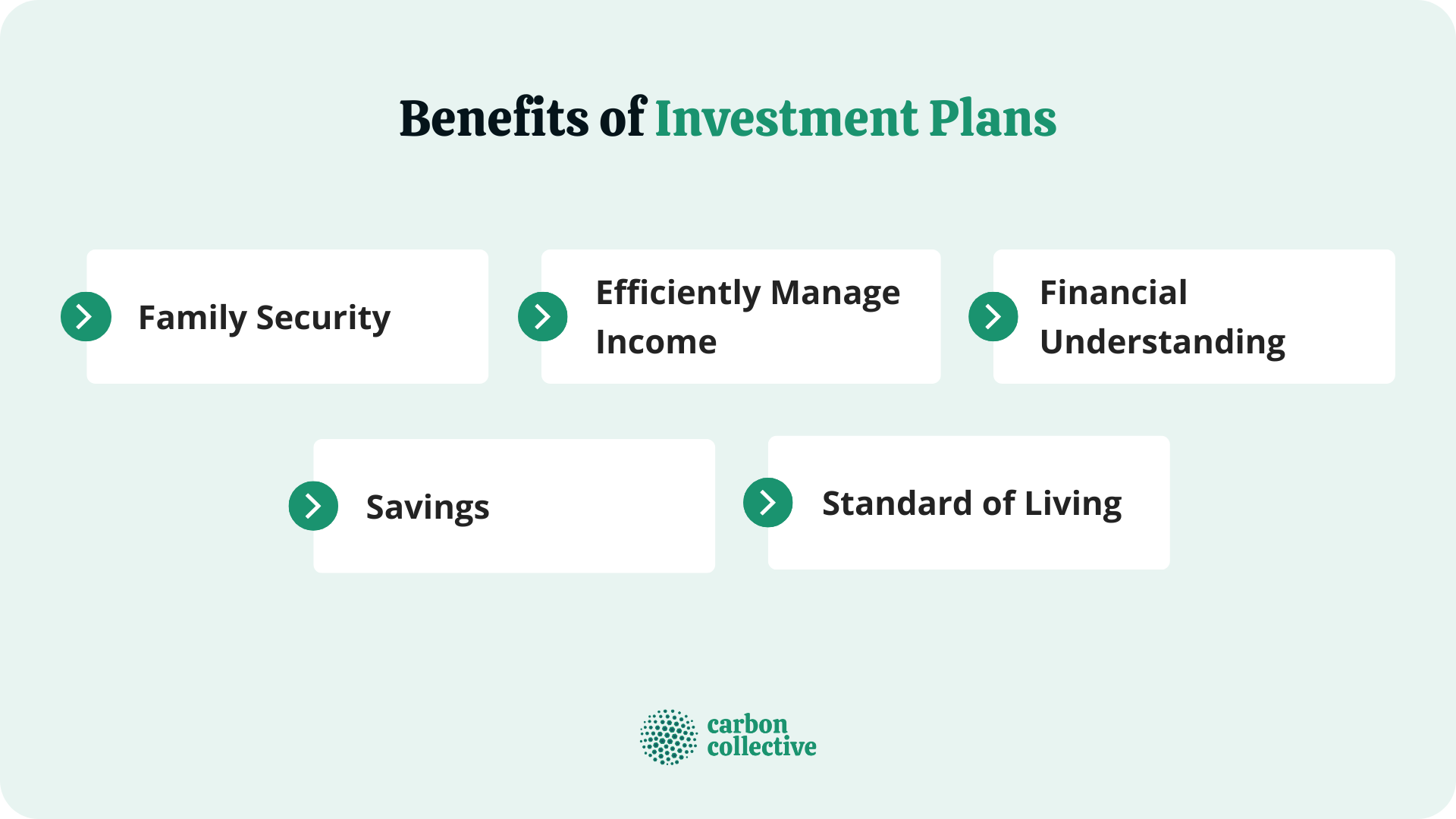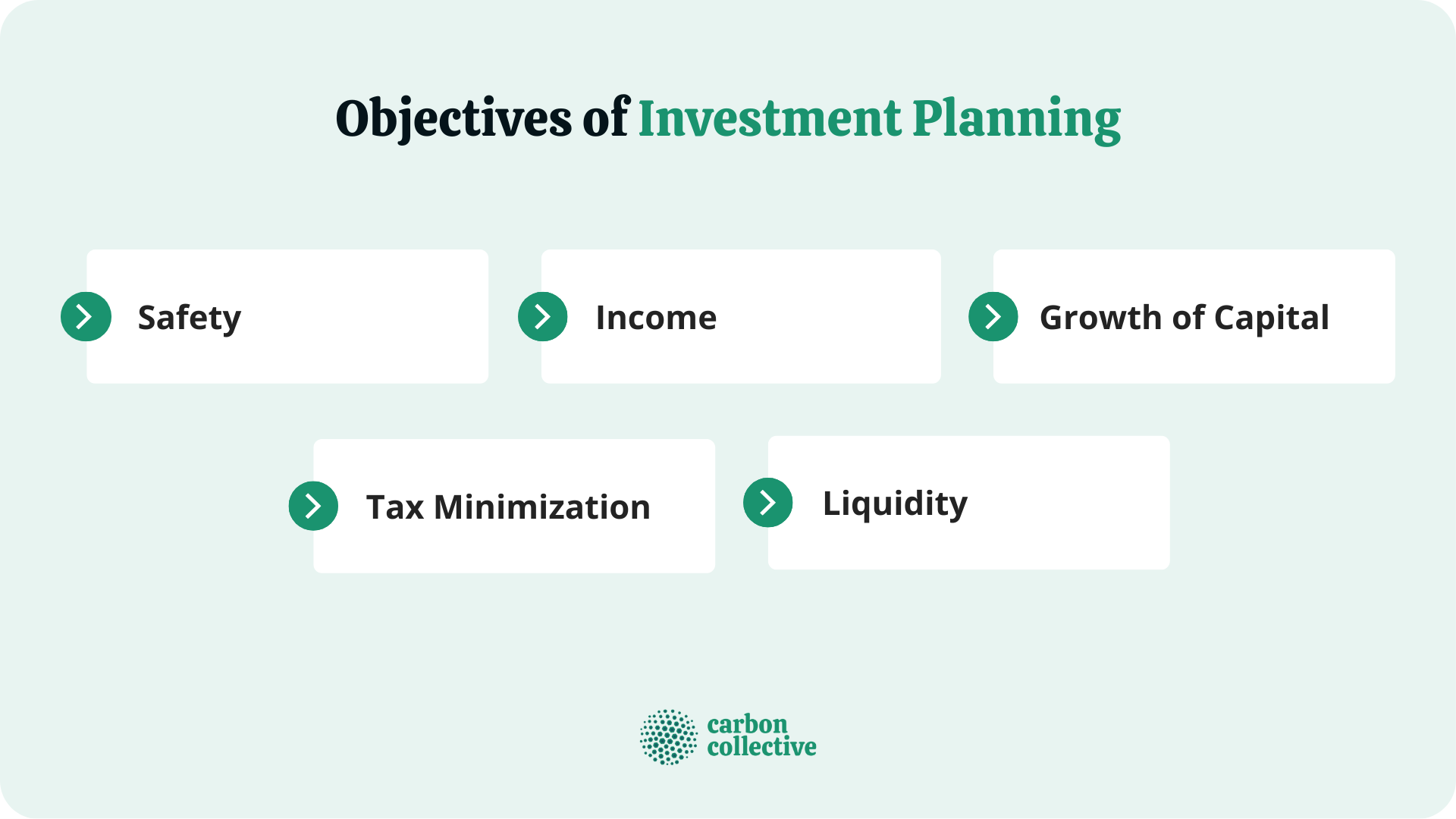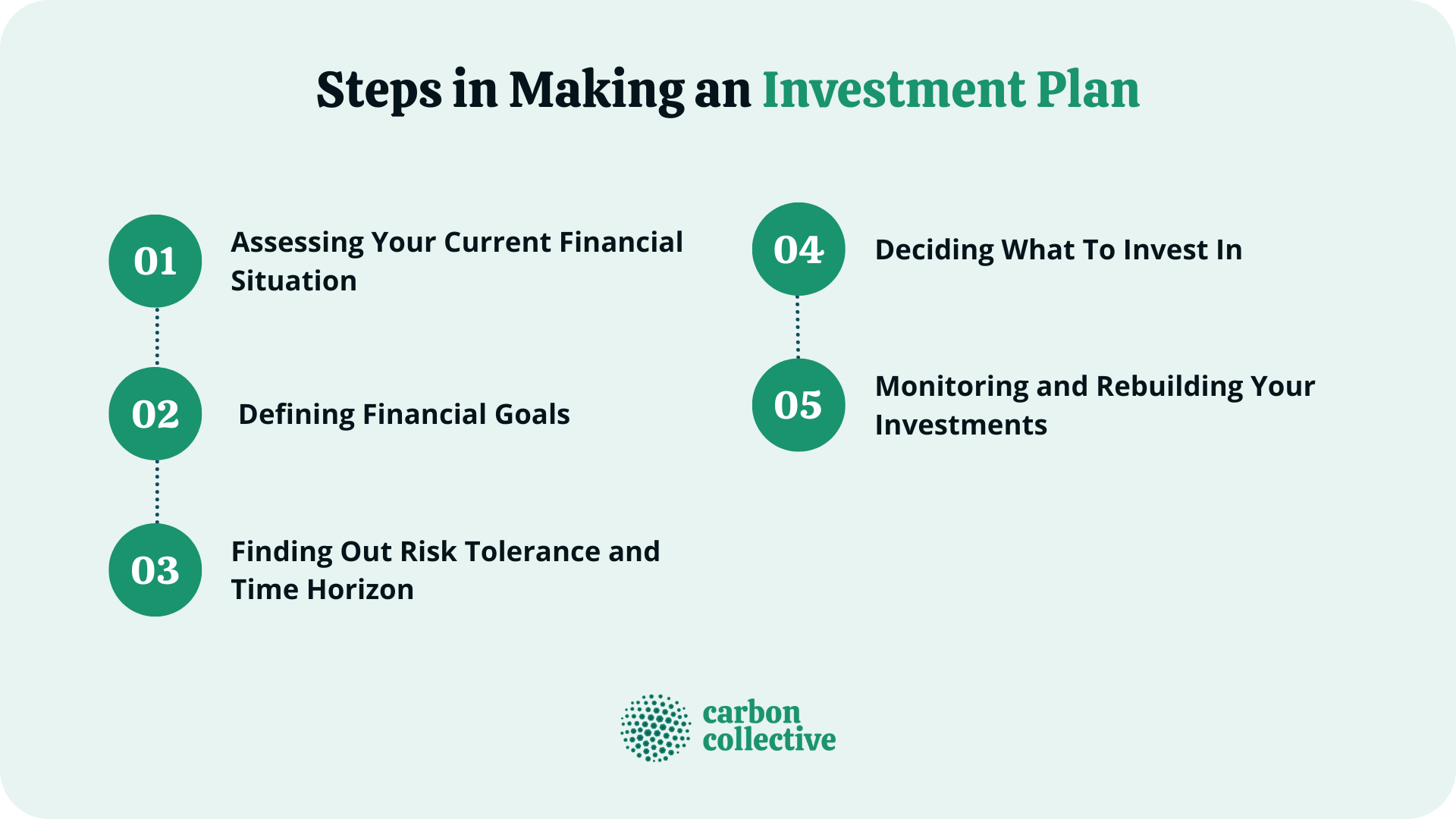What Is an Investment Plan?
An investment plan is a tool in the process of financial planning designed to develop an investing strategy to achieve your financial goals.
An investment plan helps you structure how much cash, stock, bonds, and real estate to invest in to maximize returns.
Benefits of Investment Plans
Investment plans come with different benefits. Some of these include:

Putting together your own investment plan? You may have questions about how to set up the right accounts, what portfolios make sense for you, and more. 
Family Security
Investment planning is essential for the security of the family. For instance, if there is anything that happens to the working family member, the investment will help the other family members financially secure.
Efficiently Manage Income
With an investment plan, the income and expenditure of a person may be managed efficiently.
Financial Understanding
Having a financial understanding will be easier for an individual to evaluate investments or retirement.
Thus, investment planning will help in understanding the current financial situation.
Savings
An investment plan not only provides for the future but also helps in saving money.
Standard of Living
The standard of living can be kept up or increased with an investment plan as it will help to have a flow of income even after retirement.
Objectives of Investment Planning
There are different objectives of investment planning, and these include:

Safety
In finance, our family's safety is one of the main objectives of investment planning.
Hence, investment is considered a money market safer than the bond market.
Income
Investors must invest accurately, like investing in an appropriate asset class and evaluating the high risk-return ratio to benefit from a maximum return.
For instance, Investing in higher-risk investment vehicles can generate a higher income.
Growth of Capital
Capital gain differs from return in that it is only perceived if the security is sold at a higher price than it originally purchased.
It will lead to capital loss if sold at a lower price. Investors who aim to gain capital should invest in such securities for longer.
Tax Minimization
Tax minimization strategies are used to reduce the overall tax liability. It can be in the form of a deduction, exemption, or credit.
Liquidity
It is one of the essential objectives because it provides cash flow to meet emergency needs and other unexpected expenses.
The investor should have adequate liquid assets to cover at least six months of living expenses.
Steps in Making an Investment Plan
The steps in making an investment plan are as follows:

Step 1: Assessing Your Current Financial Situation
Knowing where you stand financially is the primary step. It will give you a clear idea of what needs to be done and how much risk you can afford to take.
Do this by assessing your assets, liabilities, income, and expenses.
Step 2: Defining Financial Goals
The second step is defining your financial goals. It will help you determine what you want to achieve and how much money you will need to reach your goals.
Consider your time horizon and risk tolerance when setting your goals.
Step 3: Finding Out Risk Tolerance and Time Horizon
Your risk tolerance is the number of risks you are prepared to take. It will help you determine what type of investments you should make.
Your time horizon is the timeframe in which you plan to achieve your goals. Thus, it will help you decide how long to hold onto your investments.
Step 4: Deciding What to Invest In
After your risk tolerance and your time horizon are determined, you can start looking at different investment options. You should consider stocks, bonds, mutual funds, and real estate.
Step 5: Monitoring and Rebuilding Your Investments
Once you have made your investments, you must monitor them to ensure they perform well.
It is also necessary to rebalance your portfolio from time to time to make sure you are still updated to achieve your goals.
Bottom Line
Investment planning is a process that can help you reach your financial goals.
It involves assessing your current situation, setting goals, and choosing investments that fit your risk tolerance and time horizon.
Also, you should monitor your investments and rebalance your portfolio as needed.
Investment planning can also provide peace of mind knowing that you and your family are taken care of financially.
FAQs
1. What is investment planning?
Investment planning is a process that can help you reach your financial goals. It involves assessing your current situation, setting goals, and choosing investments that fit your risk tolerance and time horizon.
2. What are the objectives of investment planning?
The objectives of investment planning include safety, income, capital growth, liquidity, and tax minimization.
3. Why is investment planning important?
Investment planning is essential because it can help you reach your financial goals. It can also provide peace of mind knowing that you and your family are taken care of financially.
4. What are the steps to making an investment plan?
Making an investment plan includes assessing your current financial situation, defining financial goals, determining risk tolerance and time horizon, deciding what to invest in, and monitoring and rebalancing your investments.
5. What are the benefits of an investment plan?
The benefits of investment planning include family security, efficient income management, financial understanding, savings, and a higher standard of living.
